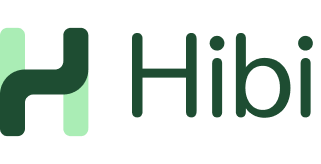
Sign language and AAC for autism
by Maria De Leon
Nov 20, 2023
Maria De Leon, a speech language pathologist at NAPA Centre, explores a variety of communication methods and how they can support autistic children and their families.
What is augmentative alternative communication (AAC)?
Believe it or not, we all have used a form of AAC in our lives. You may have or seen people use a gesture or facial expression to communicate. You may have seen an individual point to pictures or push buttons on a computer that speaks for them. Or you may be that person who prefers texting rather than speaking on the phone. If you have done any of these forms of communication, you have used AAC.
The American Speech-Language Association (ASHA) states that augmentative and alternative communication (AAC) includes all forms of communication (other than oral speech) that are used to express thoughts, needs, wants, and ideas. AAC can be used to supplement existing speech, and alternatively when used in place of speech that is absent or not purposeful.
Types of AAC
Unaided AAC: AAC that does not require external tools or physical aid. This type of form requires some motor control of our own body. It includes:
- Facial expressions
- Body language
- Gestures
- Sign language
Aided AAC: AAC that uses tools or materials either electronic (high-tech) or non-electronic (low/light tech). This include but is not limited to:
Low-tech/paper-based:
- Pictures
- Objects
- Photographs
- Writing
- Communication boards/books
High-tech:
- Speech generating devices (SGDs) or voice output communication aids (VOCAs)
- AAC Applications
Children with autism and AAC
For years now, research has shown that AAC can be used to help those with developmental and acquired disabilities to communicate successfully. Children with autism often experience difficulties in expressing their wants/needs and understanding the world around them. Not being able to communicate in a way that others can understand them affects the child’s and their family’s quality of life. This can result in frustration and unwanted behaviours.
At NAPA Center, our goal is to provide all the necessary tools for the child to communicate effectively his/her wants, needs, thoughts, and feelings. This is why we provide and accept multiple means for the child to communicate. This means can range from gestures, sign language, voice output from a speech-generating device, or a combination of forms. The earlier we start language intervention, the faster the child learns how to communicate effectively and eliminate unwanted behaviours.
Benefits of sign language for autism
Many children with autism have been able to learn and communicate successfully via sign language because it is visually based, unaided, and provides a mode of quick communication. Additionally, it is something that can be easily learned and used anywhere, at any time. By providing a way for the child to communicate you can help reduce negative behaviors that arise from the child’s inability to communicate their immediate wants and needs.
Some signs that you can start teaching are: “more”, “all done”, “help”, “eat”, “drink”. It is important to remember that when teaching and using sign language one can pair it with verbal language. For some children, using the visual of the signed word can help them in a transition to verbal speech as the sign acts as a visual aid for spoken words.
Benefits of speech generating devices (SGDs)
Using SGDs with children with autism can teach language and literacy skills. One popular myth about AAC and SGDs is that it will obstruct the development of verbal speech. However, research has shown us that on the contrary – AAC helps children develop language and verbal speech faster. It allows children to have a visual and auditory representation of vocabulary words and the ability to combine words to make meaningful sentences.
Some SGDs – like the ones in forms of an application in an iPad or mobile device – are highly portable, relatively low cost, and help empower the family and child. Some examples of these applications include but are not limited to LAMP, TouchChat, Proloqu2go, and Avaz.
If you have questions about therapy options for children with autism, AAC, or would like more information on how to get started, get in touch with your speech language pathologist. Additionally, feel free to contact NAPA’s Pediatric Speech Therapy program for a free consultation with one of our speech language pathologists. We specialize in AAC and treat a diverse range of diagnoses, including autism. We are here to help – reach out anytime!
This article was originally published by NAPA.
Maria De Leon is a speech language pathologist (SLP) at NAPA Center, with more than five years in the special education field. She has worked with a variety of families to help children reach their highest potential. She has a passion for augmentative and alternative communication (AAC) and advocating for individuals with communicative disorders. She loves coffee and, on the weekend, you can find her catching up on tv shows with her kitty and puppy.
Let’s clear out the complexities of care. Try Hibi for free here.

